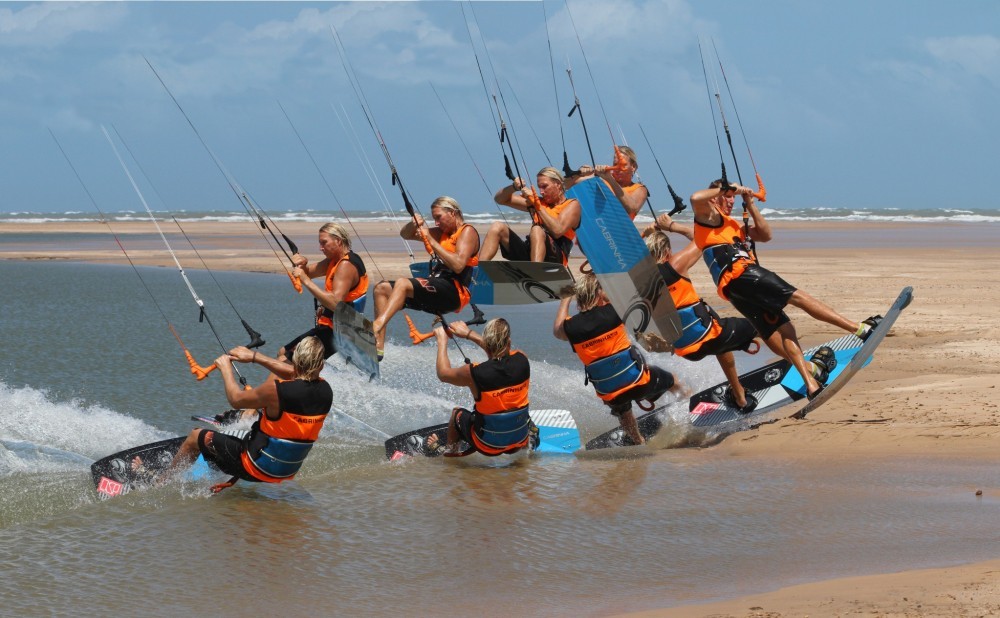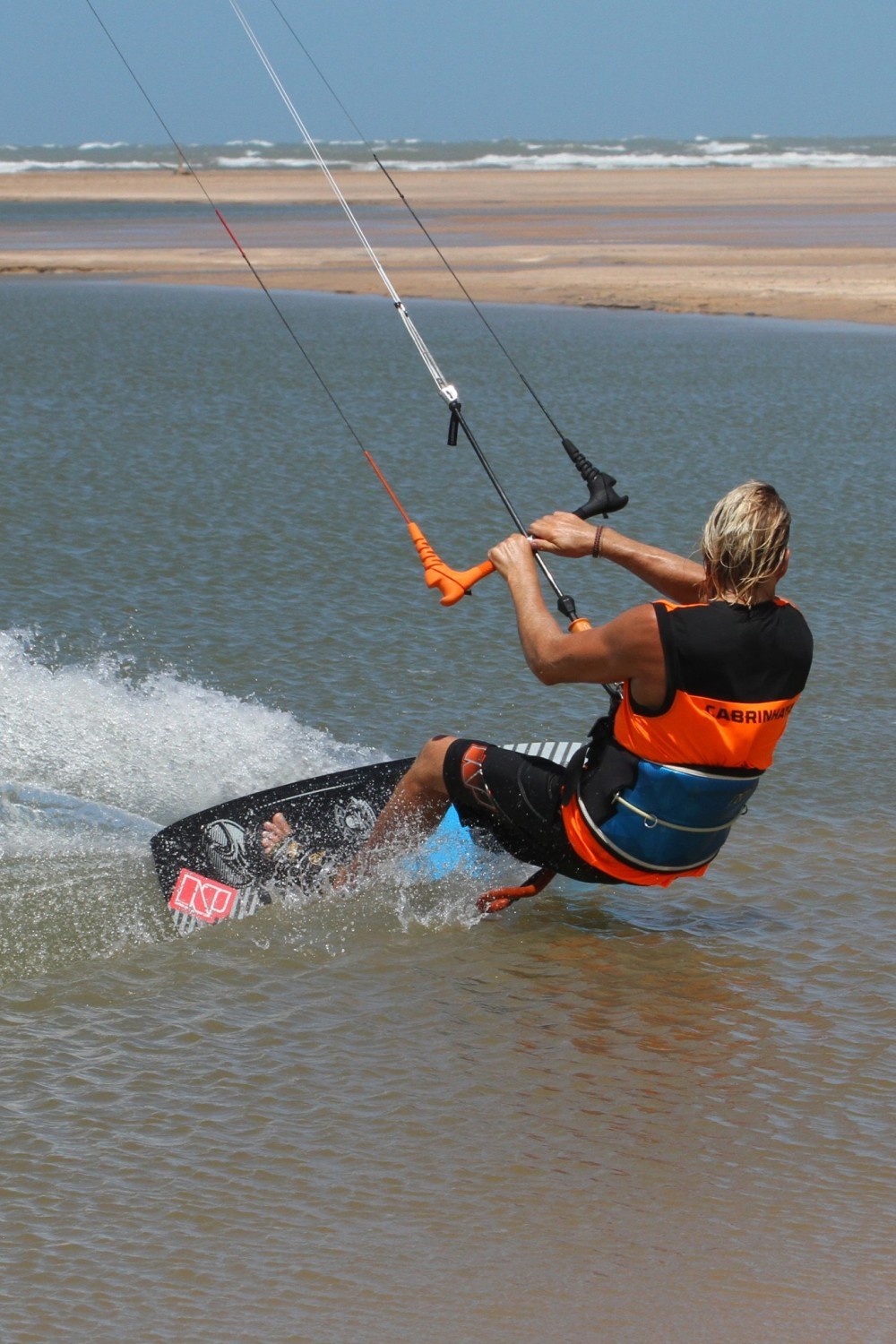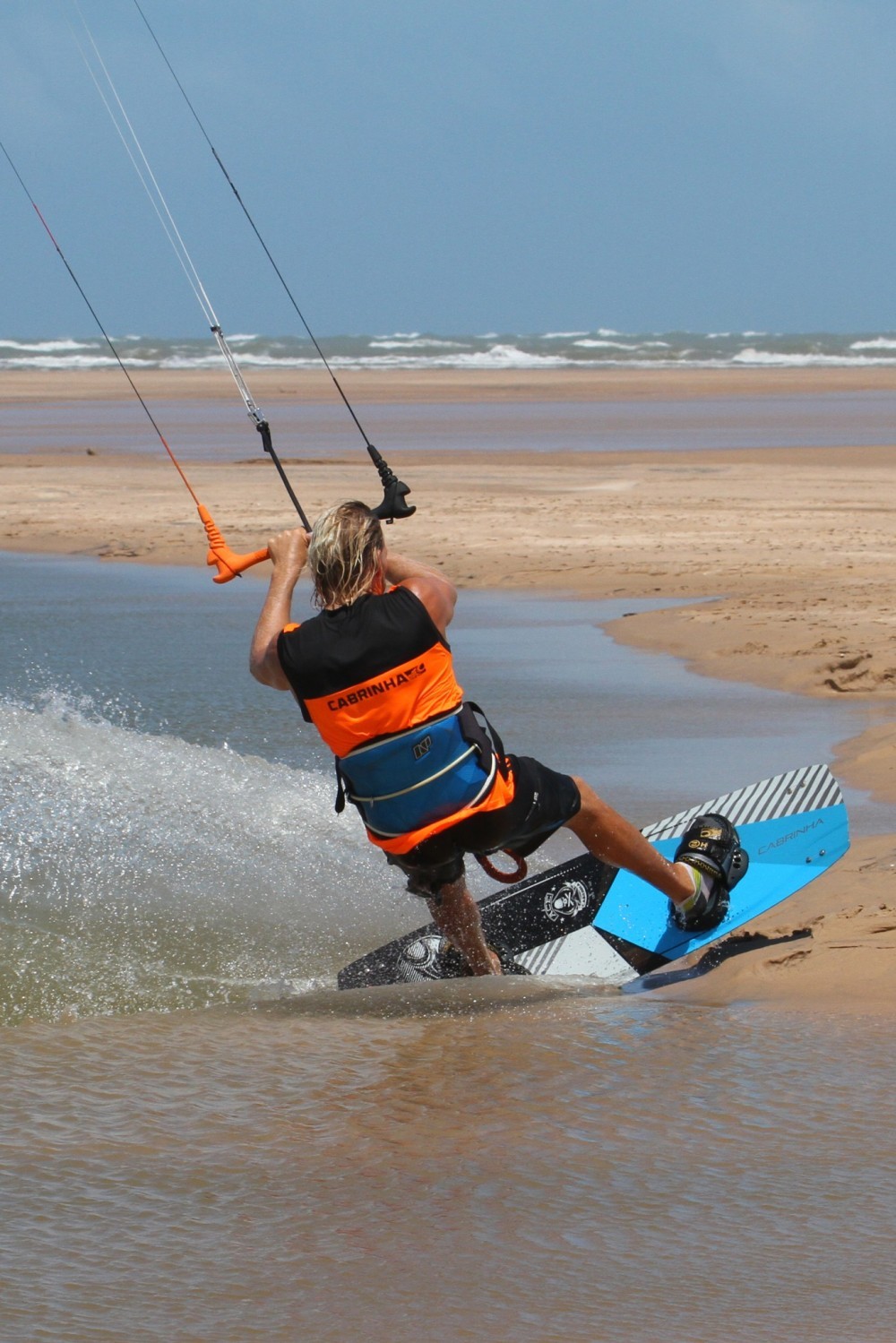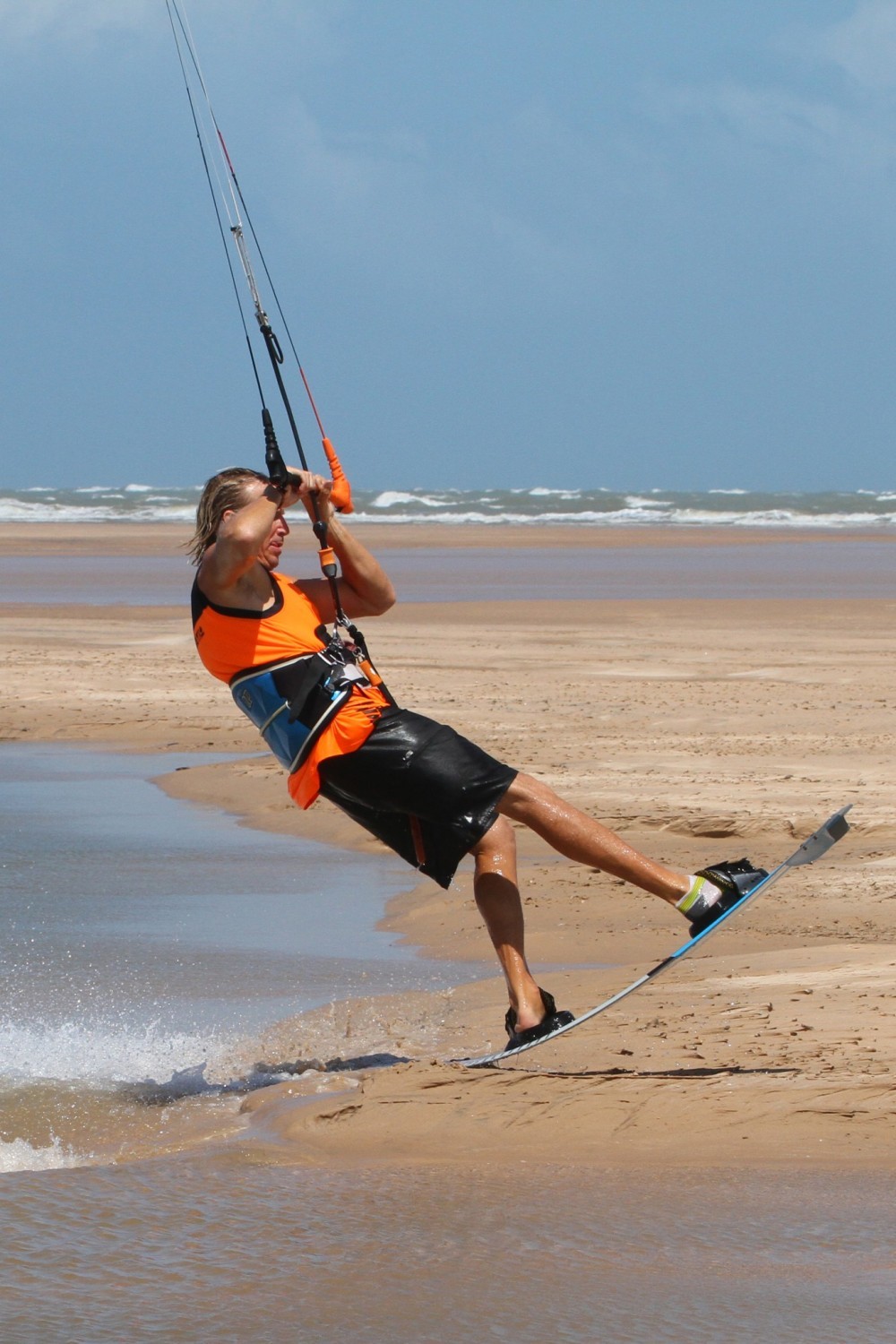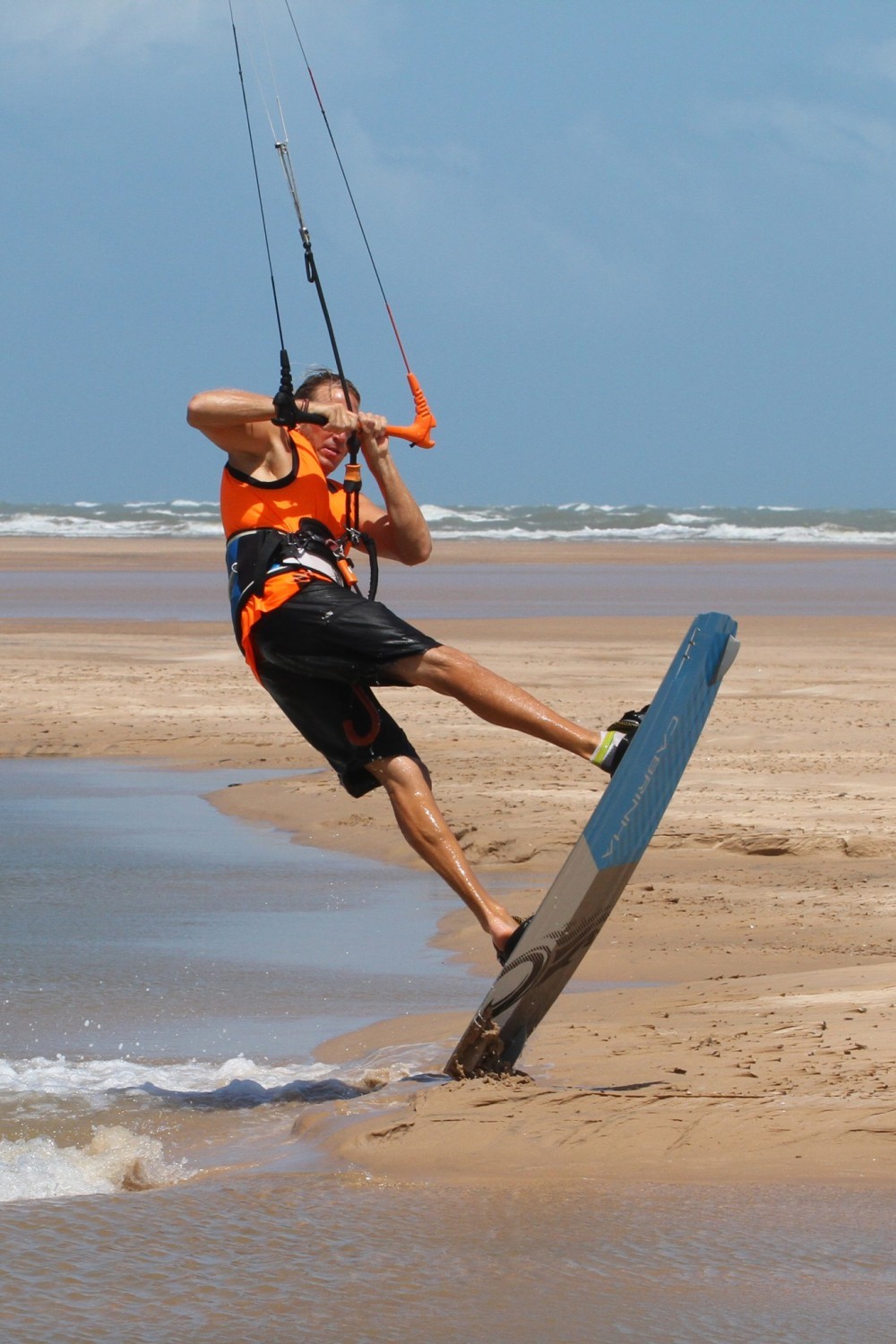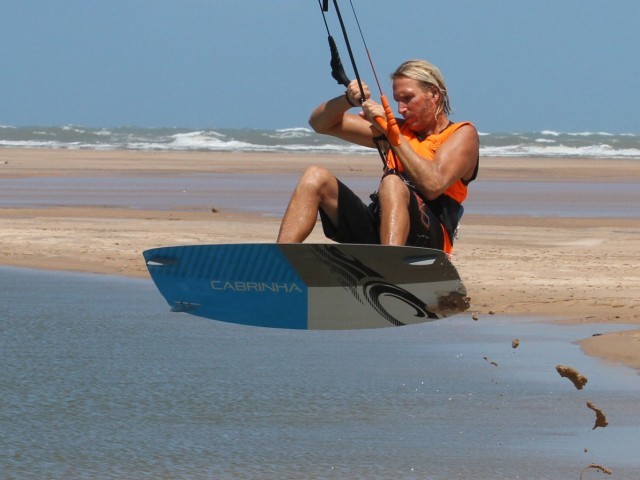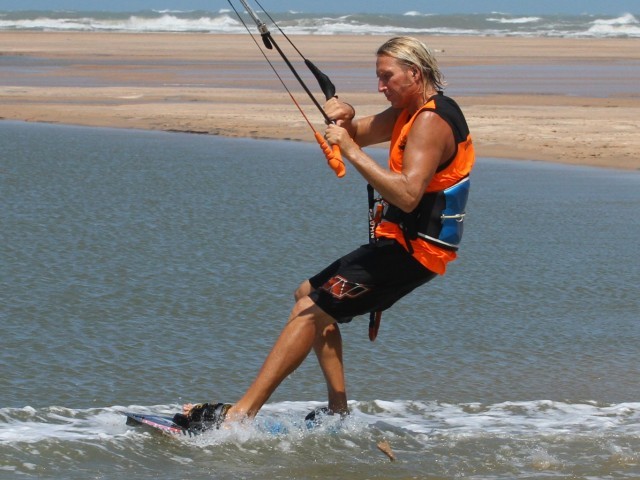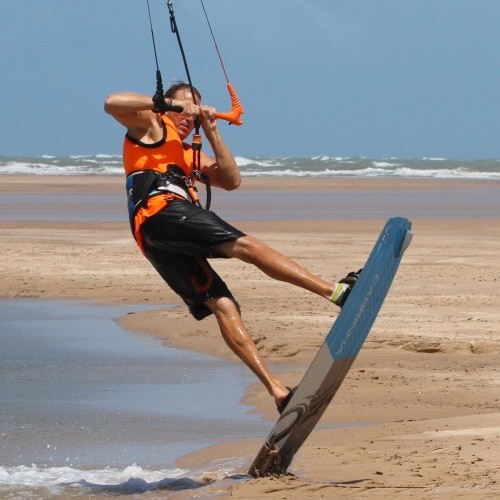
Beach Bounce BLT
Technique / Intermediate
Introduction
For want of a better expression, there is more than one way to skin a cat, and this translates tokiting as there is more than one way to change direction. This in fact would be a British understatement at its most quintessential, for there are possibly too many types and variations of transitions to bother counting. Suffice to say here is another one! The Beach Bounce BLT is the next step on from the Beach Bounce featured back in Issue 50, much like your bog standard BLT is the next step up from an Air Gybe. This is a fun trick to learn, and is another chance to wave the “look at me” flag as a showboating champ.
We won’t order you to nail the straight beach bounce transition before this, but it will of course help immeasurably. However, we will use the imperative to imply that you learn a BLT first. In essence this is a very slow BLT split into two halves, take off to beach plant and then bounce off to downwind landing.We’d recommend that you learn this in an offshore wind direction. As always we’ll concentrate on the moments that we consider most important first…
The Approach Pic A
Nothing new here but a healthy reminder of how you need to come into such a transition. The most important factor here is to keep tension in your lines and edge against them, so that when you move the kite it lifts rather than you just drifting underneath it and having nothing there. In this move it’s even more important as you’ll need some oomph in the kite to get you away from the beach or whatever potential obstacle you intend to stop on. The trick here, however, is gauging at what distance from the beach you should send the kite. Too early and you won’t make land, too late and you’ll be halfway up the beach with nowhere to go! Yet again, tension helps here. Edging hard will reduce your speed, keep tension and enable you to judge when to send the kite. The other must do here is to send the kite with purpose, it doesn’t have to be for long like a jump, but you want the kite moving not drifting. You can see that Christian is on a hard edge, driving upwind and he’s given the bar a decent input.
Take Off Pic B
You don’t want to ride up the beach so getting airborne before you hit the sand is a must. As long as you’ve given the kite a short but sharp send, the kite will be ready to lift you as soon as you give it the signal. Here, as Christian is about to hit the beach, he drops his weight back and carves harder so that he can stamp up off his back foot, whilst simultaneously pulling in on the bar. Your aim is to pop up off the water so that you’re helping the kite. The other result of this carve to pop is that it will give you some energy for your back rotation. However, you’re not aiming for much, otherwise you’ll end up doing a BLT. You can see that Christian’s head is looking forwards, not over his front shoulder, so he won’t spin on take-off. It’s all up not around.
The Plant Pic C
It’s easy to pendulum under and away from the kite so you need to stop yourself by getting the board on the deck. You don’t want to land flat, as not only will this make it impossible to spring back up,but you’re far more likely to get stuck to the beach. So it’s tail first. You can see in the photo that Christian is leaning back, a result of his take off, all he needs to do is push his back foot downwards and the tail of the board will make contact and stop him in his tracks. At the same time he needs support from the kite so Christian is holding the bar in with the kite at 12-ish. You can see the board flexing, just gagging to give Christian some energy back for the next step.
The Bounce Pic D
This next step is the multitasking stage where you don’t want to get confused. Not only do you need to spring up off the tail of the board, you also need to pull in on the bar for a bit of lift, AND you need to start pulling on what will be your new front hand so that as well as lifting you, the kite can pull you out and away from the beach. If you’re happy with your BLTs this should be child’s play, but there is always room for error!! To pop up stamp down hard against your back foot, extending your back leg as Christian is doing here. At the same time lead with your head and upper body to set the second half of the rotation in motion, and then finally get pulling on your new front hand to help you get away from terra firma.
Back Where You Belong Pic E
If you stamp hard, keep the kite powered, lead with your head and pull with the correct hand you should end up here. As you bounce up, the pull from the kite will lead you, so keep the bar in and try to lift your knees. As you do this your feet and the board will follow. All that is left is to give it even more front hand so that you can end up…
The Landing Pic F
Here! Just like any air transition, for a marshmallow landing you want the board flat and pointing down wind. You can see that Christian is looking downwind, he’s got the bar in to use all the power and he has landed over the board which is pointing downwind so it’ll glide even without power from the kite. He can then carve back up and onto an edge. Brilliant.
Top Tips
This move will be easier with power, and the bar trimmed out away from you. This way you’ll get lift and will be able to control the kite more. If your sweet spot is too close, you’ll feel hunched up and unable to get anything from the kite.
For your first few attempts this move should be practiced with the wind blowing off a sandbar or floating object. This way if you don’t make it you’ll just get wet. Once you’ve mastered the art you can bring it all the way around to cross-shore!
Control your speed. If you come in slowly you’ll have more confidence to send the kite and land on something solid. Otherwise you’ll have too much momentum and everything will be more difficult and rushed. Use your edge to slow down, not your kite.
Watch the Videos and have a look at the Sequence to see it playing out in full.
Common Problems
If you’re not making it to the beach, you’re sending the kite too early, that is to say too far away from dry land. Better this way, but now try a tad later.
If you’re riding up the beach it’s likely that you’re not sending the kite hard enough, or else you’re letting the bar out when the kite wants to lift. Keep the bar on the sweet spot to get a feel for the timing.
If you’re sticking to the beach you’re landing on a flat board. Make sure you lean back and push the tail into the sand.
If you’re falling when bouncing, the chances are you’ve let the kite drift too far back, so be more aggressive with the send, keep the bar in and pop off the water before the kite picks you up.
Keystones
- Edge hard and carve up.
- Lean back and pop early.
- Push tail down to stop.
- Turn head, bounce and dive kite.
- Knees up, pull harder and aim downwind.
This technique article was in Issue 55 of IKSURFMAG.
Related
By Christian and Karine
Christian and Karine have been working together as a coaching team, running improver to advanced kitesurfing clinics since 2003.






